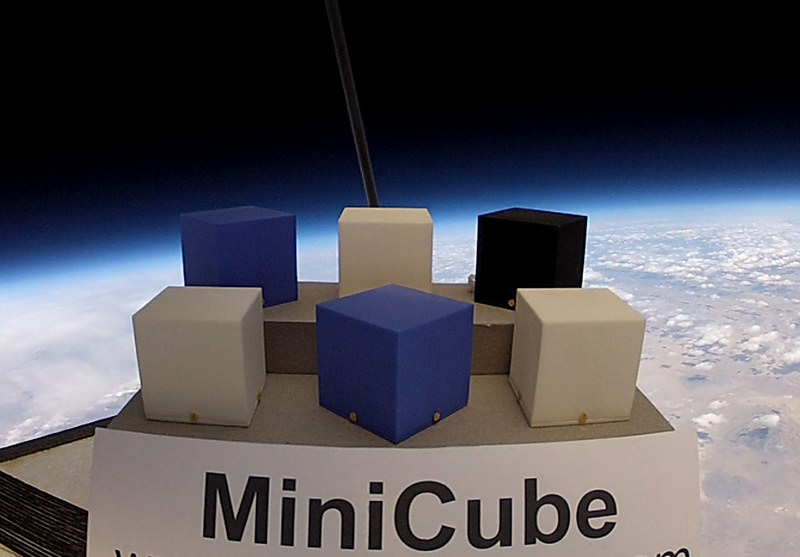Few places in the solar system are better suited to a balloon than Titan. The combination of low gravity and high atmospheric density makes Saturn’s largest moon ideal for a lighter than “air” vehicle, and the idea to put one there has been around for at least two decades. So why haven’t we yet? The simple answer is the size of the necessary balloon is too large for the existing launch platforms. But a team from Boeing, the prime contractor on the Space Launch System (SLS), believes their new launch platform will be capable of getting a large balloon into orbit, along with its necessary scientific payload – and start unlocking the mysteries of this intriguing moon.
Continue reading “SLS Could Launch A Titan Balloon Mission”Want to Soar to the Stratosphere? Japan Joins the Balloon Tourism Race
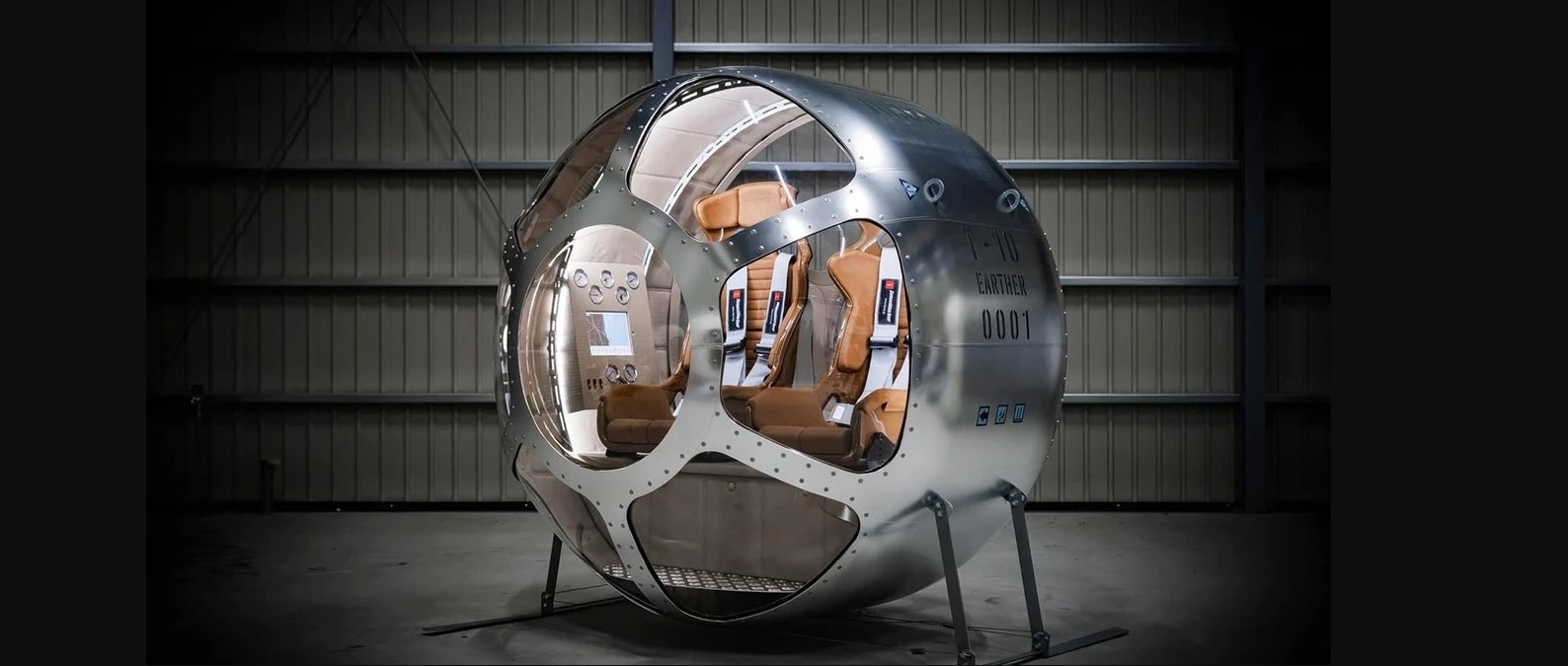
A Japanese company has put out the call for passengers who’d be willing to pay more than $175,000 for an hours-long ride in a balloon-borne capsule that will rise as high as 15 miles (25 kilometers).
Technically, that’s nowhere near the boundary of outer space, but it’s high enough to get an astronaut’s-eye view of the curving Earth beneath a black sky.
“It’s safe, economical and gentle for people,” the CEO of a startup called Iwaya Giken, Keisuke Iwaya, told reporters in Tokyo. “The idea is to make space tourism for everyone.”
Other companies are planning similar stratospheric tourist ventures. But if Iwaya’s venture sticks to its announced timeline and begins flying customers around the end of this year, it would be the first to get to market.
Continue reading “Want to Soar to the Stratosphere? Japan Joins the Balloon Tourism Race”Exploring Titan with Aerial Platforms
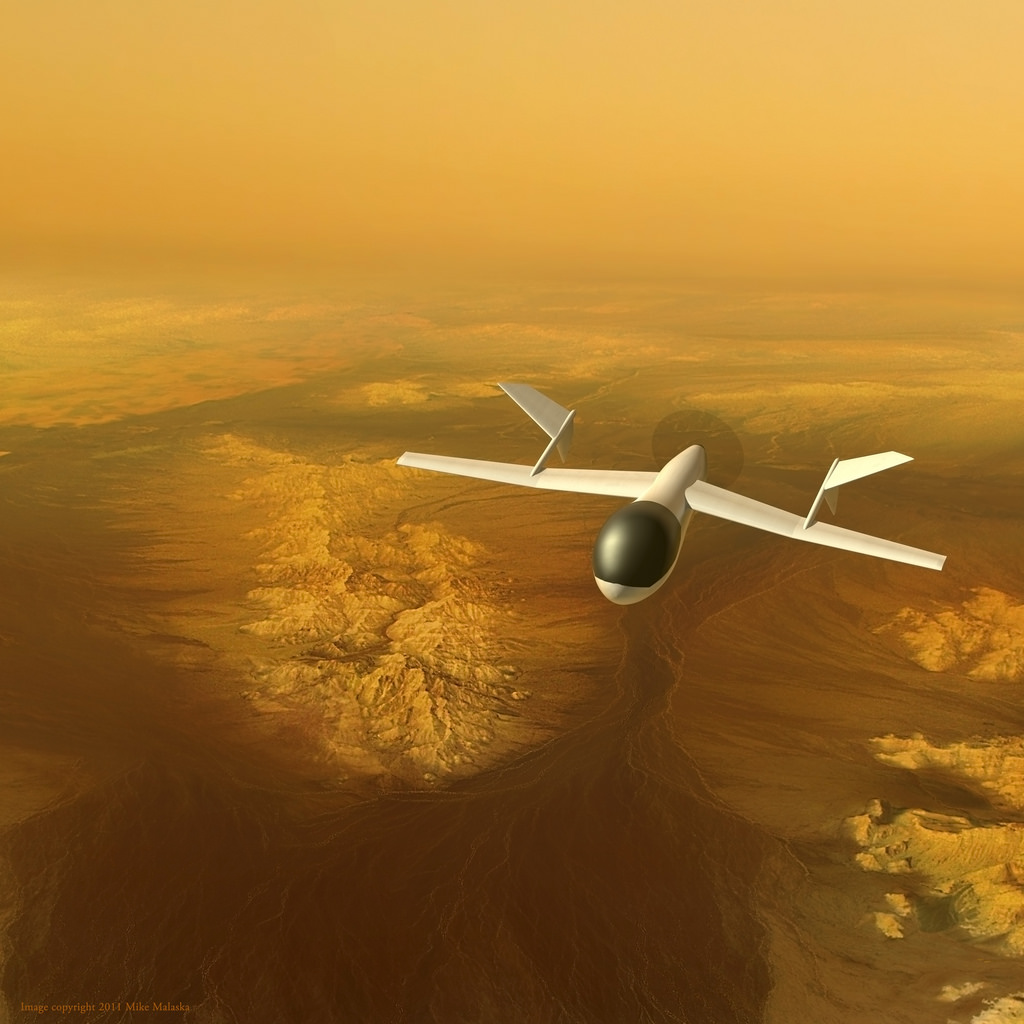
Last week, from Monday Feb. 27th to Wednesday March 1st, NASA hosted the “Planetary Science Vision 2050 Workshop” at their headquarters in Washington, DC. During the course of the many presentations, speeches and addresses that made up the workshop, NASA and its affiliates shared their many proposals for the future of Solar System exploration.
A very popular theme during the workshop was the exploration of Titan. In addition to being the only other body in the Solar System with a nitrogen-rich atmosphere and visible liquid on its surface, it also has an environment rich in organic chemistry. For this reason, a team led by Michael Pauken (from NASA’s Jet Propulsion Laboratory) held a presentation detailing the many ways it can be explored using aerial vehicles.
The presentation, which was titled “Science at a Variety of Scientific Regions at Titan using Aerial Platforms“, was also chaired by members of the aerospace industry – such as AeroVironment and Global Aerospace from Monrovia, California, and Thin Red Line Aerospace from Chilliwack, BC. Together, they reviewed the various aerial platform concepts that have been proposed for Titan since 2004.
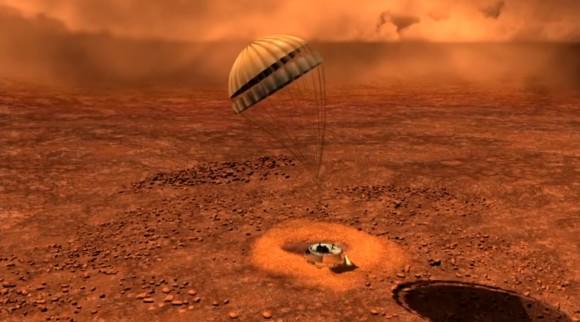
While the concept of exploring Titan with aerial drones and balloons dates back to the 1970s and 80s, 2004 was especially important since it was at this time that the Huygens lander conducted the first exploration of the moon’s surface. Since that time, many interesting and feasible proposals for aerial platforms have been made. As Dr. Pauken told Universe Today via email:
“The Cassini-Huygens mission revealed a lot about Titan we didn’t know before and that has also raised a lot more questions. It helped us determine that imaging the surface is possible below 40-km altitude so it’s exciting to know we could take aerial photos of Titan and send them back home.”
These concepts can be divided into two categories, which are Lighter-Than-Air (LTA) craft and Heavier-Than-Air (HTA) craft. And as Pauken explained, these are both well-suited when it comes to exploring a moon like Titan, which has an atmosphere that is actually denser than Earth’s – 146.7 kPa at the surface compared to 101 kPa at sea level on Earth – but only 0.14 times the gravity (similar to the Moon).
“The density of Titan’s atmosphere is higher than Earth’s so it is excellent for flying lighter-than-air vehicles like a balloon,” he said. “Titan’s low gravity is a benefit for heavier-than-air vehicles like helicopters or airplanes since they will ‘weigh’ less than they would on Earth.”
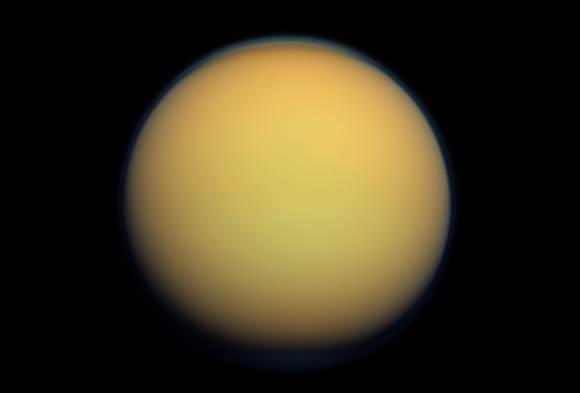
“The Lighter-than-air LTA concepts are buoyant and don’t need any energy to stay aloft, so more energy can be directed towards science instruments and communications. The Heavier-than-air concepts have to consume power to stay in the air which takes away from science and telecom. But HTA can be directed to targets more quickly and accurately the LTA vehicles which mostly drift with the winds.”
TSSM Montgolfiere Balloon:
Plans for using a Montgolfiere balloon to explore Titan go back to 2008, when NASA and the ESA jointly developed the Titan Saturn System Mission (TSSM) concept. A Flagship Mission concept, the TSSM would consist of three elements including a NASA orbiter and two ESA-designed in-situ elements – a lander to explore Titan’s lakes and a Montgolfiere balloon to explore its atmosphere.
The orbiter would rely on a Radioisotopic Power System (RPS) and Solar Electric Propulsion (SEP) to reach the Saturn system. And on its way to Titan, it would be responsible for examining Saturn’s magnetosphere, flying through the plumes of Enceladus to analyze it for biological markers, and taking images of Enceladus’ “Tiger Stripes” in the southern polar region.
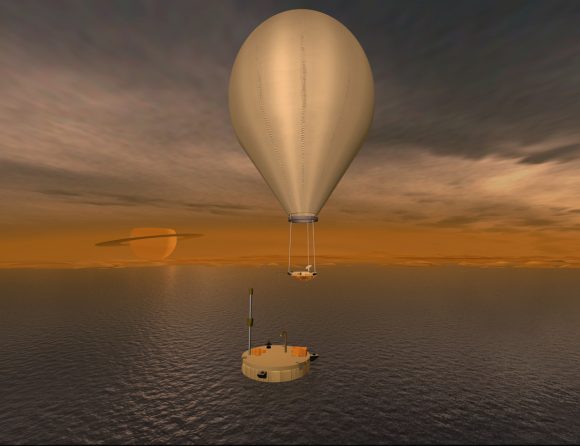
Once the orbiter had achieved orbital insertion with Saturn, it would release the Montgolfiere during its first Titan flyby. Attitude control for the balloon would be provided by heating the ambient gas with RPS waste heat. The prime mission would last a total of about 4 years, comprised of a two-year Saturn tour, a 2-month Titan aero-sampling phase, and a 20-month Titan orbiting phase.
Of the benefits to this concept, the most obvious is the fact that a Montgolfiere vehicle powered by RPS could operate within Titan’s atmosphere for many years and would be able to change altitude with only minimal energy use. At the time, the TSSM concept was in competition with mission proposals for the moons of Europa and Ganymede.
In February of 2009, both the TSSM and the the Europa Jupiter System Mission (EJSM) concept were chosen to move forward with development, but the EJSM was given first priority. This mission was renamed the Europa Clipper, and is slated for launch in 2020 (and arriving at Europa by 2026).
Titan Helium Balloon:
Subsequent research on Montgolfiere balloons revealed that years of service and minimal energy expenditure could also be achieved in a much more compact balloon design. By combining an enveloped-design with helium, such a platform could operate in the skies of Titan for four times as long as balloons here on Earth, thanks to a much slower rate of diffusion.
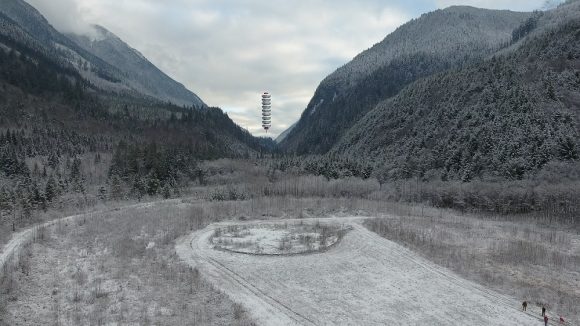
Altitude control would also be possible with very modest amounts of energy, which could be provided either through pump or mechanical compression. Thus, with an RPS providing power, the platform could be expected to last longer that comparable balloon designs. This envelope-helium balloon could also be paired with a glider to create a lighter-than-air vehicle capable of lateral motion as well.
Examples of the this include the Titan Winged Aerobot (TWA, shown below), which was investigated as part of NASA’s Phase One 2016 Small-Business Innovation Research (SBIR) program. Developed by the Global Aerospace Corporation, in collaboration with Northrop Grumman, the TWA is a hybrid entry vehicle, balloon, and maneuverable glider with 3-D directional control that could satisfy many science objectives.
Like the Mongtolfiere concept, it would rely on minimal power provided by a single RPS. Its unique buoyancy system would also allow it to descend and ascend without the need for propulsion systems or control surfaces. One drawback is the fact that it cannot land on the moon’s surface to conduct research and then take off again. However, the design does allow for low-altitude flight, which would allow for the delivery of probes to the surface.
Other concepts that have been developed in recent years include heavier-than-air aircraft, which center around the development of fixed-wing vehicles and rotorcraft.
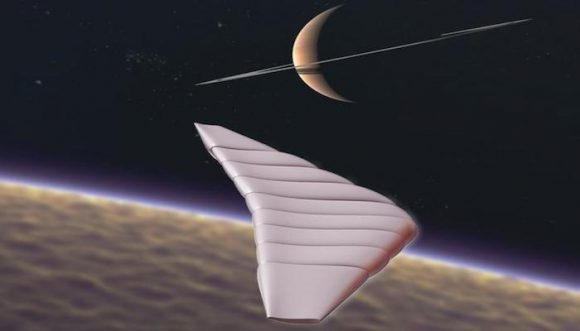
Fixed Wing Vehicles:
Concepts for fixed-wing aircraft have also been proposed in the past for a mission to Titan. A notable example of this is the Aerial Vehicle for In-situ and Airborne Titan Reconnaissance (AVIATR), an unmanned aerial vehicle (UAV) that was proposed by Jason Barnes and Lawrence Lemke in 2011 (of the University of Idaho and Central Michigan University, respectively).
Relying on an RPS that would use the waste heat of decaying Plutonium 238 to power a small rear-mounted turbine, this low-power craft would take advantage of Titan’s dense atmosphere and low gravity to conduct sustained flight. A novel “climb-then-glide” strategy, where the engine would shut down during glide periods, would also allow for power to be stored for optimal use during telecommunication sessions.
This addresses a major drawback of fixed-wing vehicles, which is the need to subdivide power between the needs of maintaining flight and conducting scientific research. However, the AVIATR is limited in one respect, in that it cannot descend to the surface to conduct science experiments or collect samples.
Rotorcraft:
Last, but not least, is the concept for a rotorcraft. In this case, the aerial platform would be a quadcopter, which would be well-suited to Titan’s atmosphere, would allow for easy ascent and descent, and for studies to be conducted on the surface. It would also take advantage of developments made in commercial UAVs and drones in recent years.
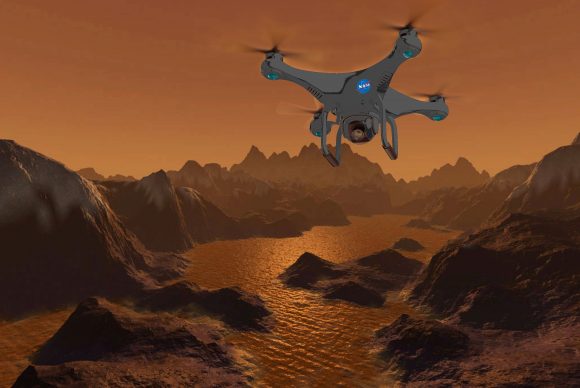
This mission concept would consist of two components. On the one hand, there’s the rotorcraft – known as a Titan Aerial Daughtercraft (TAD) – which would rely on a rechargeable battery system to power itself while conducting short-duration flights (about an hour at a time). The second component is the “Mothercraft”, which would take the form of a lander or balloon, which the TAD would return to between flights to recharge from an onboard RPS.
Currently, NASA’s Jet Propulsion Laboratory is developing a similar concept, known as the Mars Helicopter “Scout”, for use on Mars – which is expected to be launched aboard the Mars 2020 mission. In this case, the design calls for two coaxial counter-rotating rotors, which would provide the best thrust-to-weight ratio in Mars’ thin atmosphere.
Another rotorcraft concept is being pursued by Elizabeth Turtle and colleagues from John Hopkins APL and the University of Idaho (including James Barnes). With support from NASA and members of Goddard Space Flight Center, Pennsylvania State University, and Honeybee Robotics, they have proposed a concept known as the “Dragonfly“.
Their aerial vehicle would rely on four-rotors to take advantage of Titan’s thick atmosphere and low gravity. Its design would also allow it to easily obtain samples and determine the composition of the surface in multiple geological settings. These findings will be presented at the upcoming 48th Lunar and Planetary Science Conference – which will be taking place from March 20th to 24th in The Woodlands, Texas.
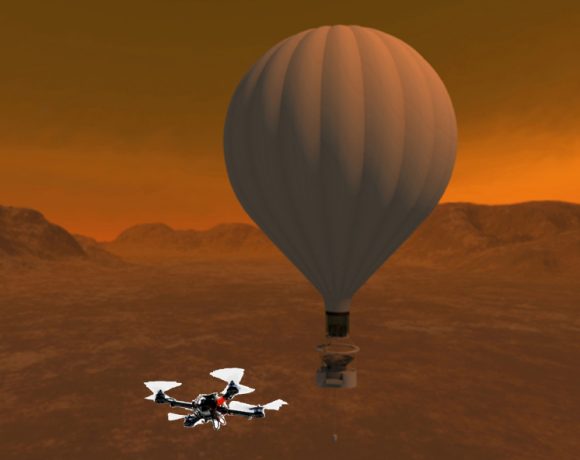
While the exploration of Titan is likely to take a back seat to the exploration of Europa in the coming decades, it is anticipated that a mission will be mounted before the mid-point of this century. Not only are the scientific goals very much the same in both cases – a chance to explore a unique environment and search for life beyond Earth – but the benefits will be comparable as well.
With every potentially life-bearing body we explore, we stand to learn more about how life began in our Solar System. And even if we do not find any life in the process, we stand to learn a great deal about the history and formation of the Solar System. On top of that, we will be one step closer to understanding humanity’s place in the Universe.
Further Reading: USRA
Google Exec Hands Silicon Valley the Stratospheric Jump Record
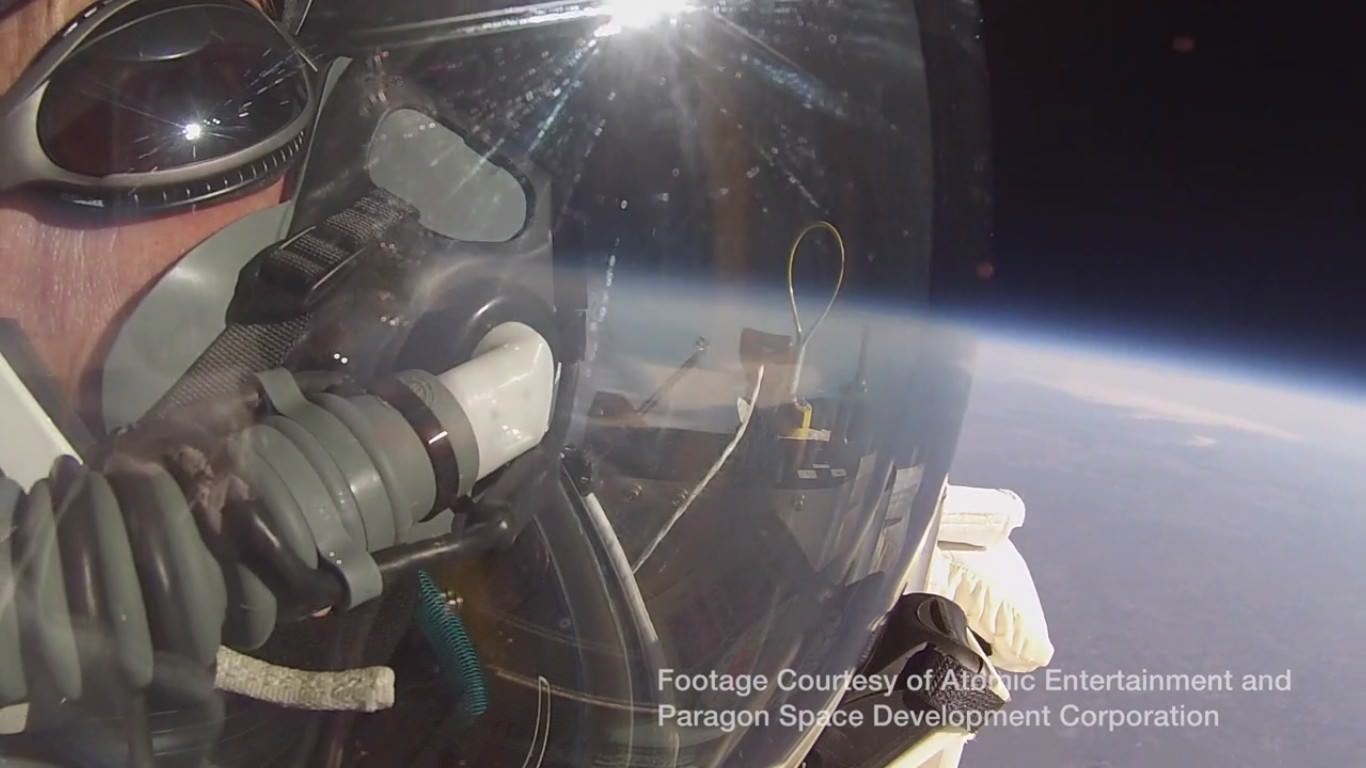
Just a little over two years since Felix Baumgartner broke USAF Colonel Joseph Kittinger’s stratospheric jump record, Alan Eustace from Google has independently smashed the high altitude skydiving record again. This brings home to Silicon Valley a record that might stand for a while. Eustace took a minimalist approach to the jump. His setup involved a helium filled balloon and just him hanging from the balloon in a spacesuit. Pure and simple, this permitted his system to reach 135,890 feet above the Earth, over 41 kilometers altitude, exceeding Baumgartner’s record by 7000 feet.
The simple design of his balloon launch might remind one of a bungy jump. This one maxed out at 822 mph and created a sonic boom. How can anyone break his record now? Can someone rise to a higher altitude? What is next for the Google high flyers? Will Baumgartner take this as a challenge to retake the record?
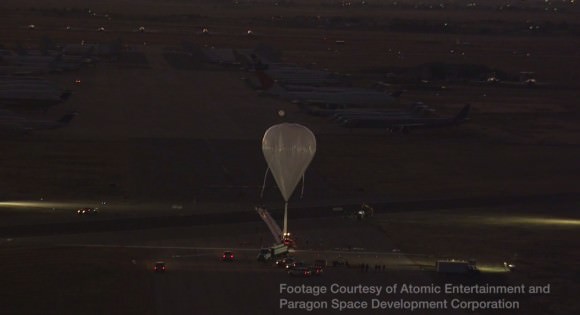
The 57 year old Alan Eustace is a Senior Vice President at Google in its Knowledge department. He is a licensed pilot but not known for undertaking extraordinary feats of daredevil. Eustace grew up in Florida and recalls that his childhood was filled with trips to Cape Canaveral for NASA launches. Not a spur of the moment undertaking, Eustace had dreamt of accomplishing this feat and record for some time.
This is the third successful balloon skydiving jump from over 100,000 feet. All three have been accomplished from Roswell, New Mexico. Kittinger’s was in 1961, Baumgartner in 2012, and now Eustace in 2014. A fourth jump was undertaken in 1966 from a height of 123,000 feet but ended in failure and the death of the skydiver, Nicholas Piantanida.
The trip to the upper heights of the atmosphere took two hours. All this time he was forced to hang very still to avoid over-heating. His spacesuit had minimal ability to cool his body during the ascent. While the stratosphere reaches temperatures of 100 below zero, the atmosphere is exceedingly thin and body heat has no way to radiate away.
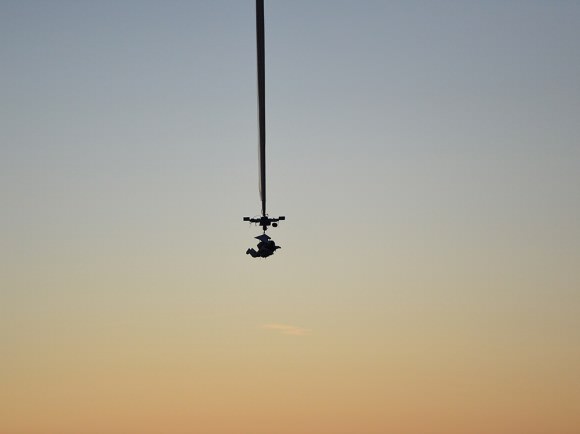
Without a capsule like Baumgartner and Kittinger before him, he relied solely on a spacesuit custom built by Paragon Space Development Corporation, a designer of life support devices. The simple design exceeded Baumgartner by over 7000 feet, nearly a mile and a half more. Eustace’s new record is approaching the maximum that has ever been achieved by any lighter than air craft, manned or unmanned.
The unmanned high altitude record for balloon flight was set in 2002 from Sanriku Balloon Center at Ofunato City, Iwate in Japan. This record stands at 173,900 feet. So there is plenty of room for record breaking but it will require pushing the limits of technology. In this day and age, there are many keen to push technological limits.
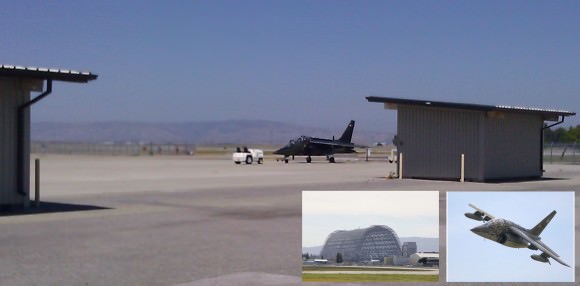
Google execs are no strangers to high flying. At Moffett Field in Mountain View, California, just a couple of miles from executive headquarters of Google, a small group of executives utilize a German made Dornier Alpha jet. Collaboratively with NASA Ames, the jet is flown by the execs and other experienced pilots to study the upper atmosphere and quite possibly to take in the views around the San Francisco bay area. They are often seen making touch n’ go’s at Moffett to maintain skills and certification. Google, the corporation, clearly showed its interest in space applications with the purchase of Skybox, a microsatellite builder, in June of this year for a reported $500 million.
Reference:
Balloon launcher Zero2Infinity Sets Its Sights to the Stars
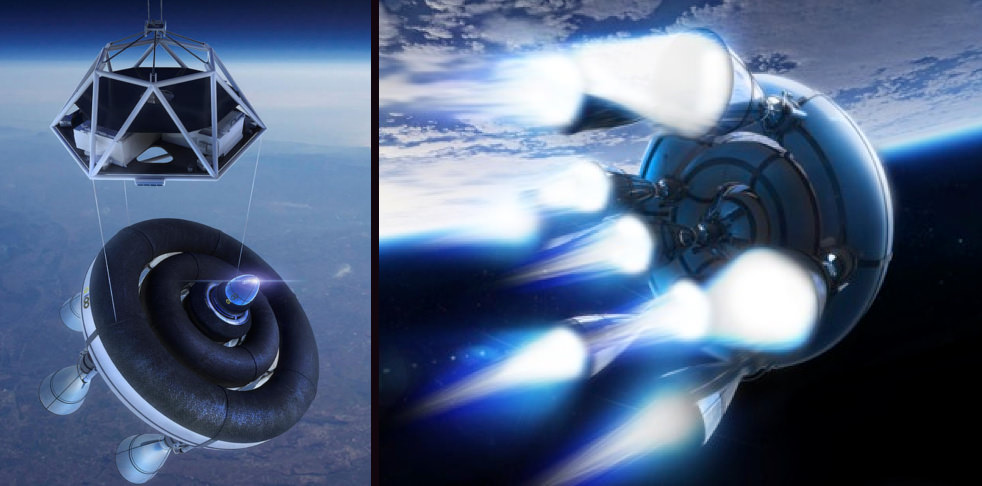
Clearly, the sky is not the limit for balloon launcher Zero2Infinity. Based in Barcelona, Spain, the company announced this week their plans to launch payloads to orbit using a balloon launch system. The Rockoon is a portmanteau, as Lewis Carroll would have said: the blend of the words rocket and balloon.
The launch system announced by the company is called Bloostar. The Rockoon system begins with a balloon launch to stratospheric altitudes followed by the igniting of a 3 stage rocket to achieve orbit. The Rockoon concept is not new. Dr. James Van Allen with support from the US Navy developed and launched the first Rockoons in 1949. Those were just sounding rockets, Bloostar will take payloads to low-earth orbit and potentially beyond.
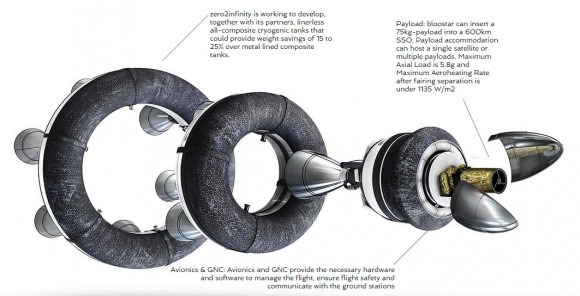
The advantage of rocket launch from a balloon is that it takes the Earth’s atmosphere out as a factor in design and as a impediment to reaching orbit. The first phase of the Bloostar system takes out 99% of the Earth’s atmosphere by reaching an altitude of over 20 km (>65,000 feet). Aerodynamics is not a factor so the stages are built out rather than up. The stages of the Bloostar design are a set of concentric rings which are sequentially expended as it ascends to orbit.
Zero2Infinity is developing a liquid fuel engine that they emphasize is environmentally friendly. The first stage firing of Bloostar will last 160 seconds, reach 250 km of altitude and an inertial speed of 3.7 km/s. This is about half the velocity necessary for reach a stable low earth orbit. The second stage will fire for 230 seconds and achieve an altitude of 530 km with velocity of 5.4 km/s. The 3rd and final stage motor will fire at least twice with a coast period to achieve the final orbit. Zero2Infinity states that their Bloostar system will be capable of placing a 75kg (165 lbs) payload into a 600 km (372 mi) sun-synchronous orbit. In contrast, the International Space Station orbits at 420 km (260 mi) altitude.
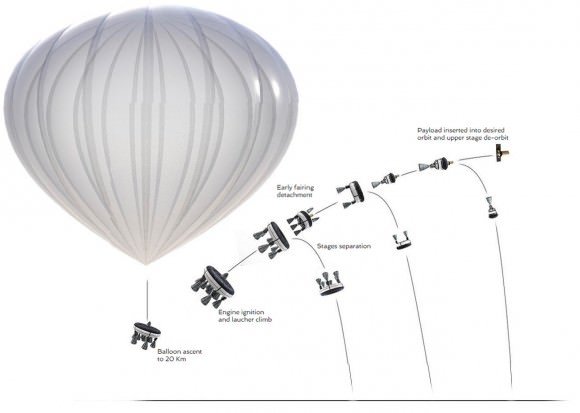
For the developing cubesat space industry, a 75 kg payload to orbit is huge. A single cubesat 10x10x10 cm (1U) will typically weigh about 1 kg so Bloostar would be capable of launching literally a constellation of cubesats or in the other extreme, a single micro-satellite with potentially its own propulsion system to go beyond low-earth orbit.
The Rockoon concept is not unlike what Scaled Composites undertakes with a plane and rocket. Their Whiteknight planes lift the SpaceShips to 50,000 feet for takeoff whereas the Zero2Infinity balloon will loft Bloostar to 65,000 feet or higher. The increased altitude of the balloon launch reduces the atmospheric density to half of what it is at 50,000 feet and altogether about 8% of the density at sea level.
The act of building and launching a stratospheric balloon to 30 km (100,000 feet) altitude with >100 kg instrument payloads is a considerable accomplishment. This is just not the releasing of a balloon but involves plenty of logistics and telecommunications with instrumentation and also the returning of payloads safely to Earth. This is clearly half of what is necessary to reach orbit.
Bloostar is blazing new ground in Spain. The ground tests of their liquid fuel rocket engine are the first of its kinds in the country. Zero2Infinity began launching balloons in 2009. The founder and CEO, Jose Mariano Lopez-Urdiales is an aeronautical engineer educated in Spain with R&D experience involving ESA, MIT and Boeing. He has speerheaded organizations and activities in his native Spain. In 2002 he presented to the World Space Congress in Houston, the paper “The Role of Balloons in the Future Development of Space Tourism”.
References:
Pingpong! How You Could Send Something Small High In The Atmosphere
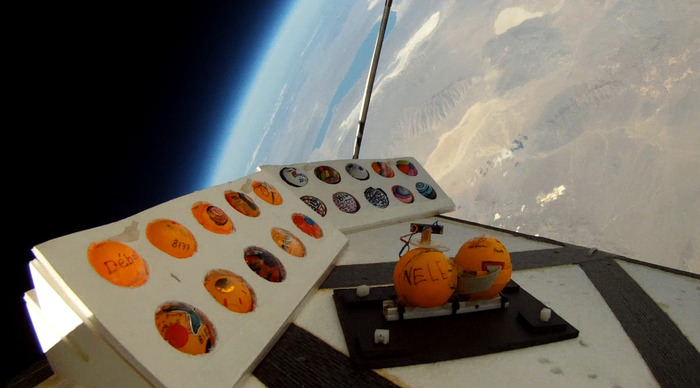
Spring is a time of treasures in eggs — think about the Easter weekend that just passed, for example, or the number of chicks hatching in farms across the world. That’s also true of “near-space” exploration. A project called PongSats has sent thousands of tiny experiments into space, and is ready to send up another batch this coming September.
The concept is simple for the students participating — slice open a ball, put something inside you want to test at high experiments, then repackage it and decorate it for the big trip up. The balloons will soar to about 19 miles (30 kilometers), which is well below the Karman Line of 62 miles or 100 kilometers that marks the edge of space. Don’t discount that, however — you will still see black skies and the curvature of the Earth from that altitude.
Anyway, about the PongSats. A Kickstarter campaign (closing in five days) is asking for money to shoot these balls into the atmosphere, for science. While it’s aimed at young students, anybody can get an experiment on that balloon, the founder says.

“My favorite is the marshmallow. You put a marshmallow inside the ping pong ball. At 100,000 feet the marshmallow puffs up completely filling the ball. Then it freeze dries. The student gets to hold in her hand the direct results of traveling [to] the top of the atmosphere,” wrote John Powell, the founder of the project.
PongSat has already been through one successful Kickstarter round, when in 2012 the concept received $12,466 — a 138% increase over its $9,000 goal. That money was slated to send 1,000 student experiments into space. To date, the company has sent over 14,000 experiments aloft with only three losses — a 0.02% failure rate.
“However, the risk for a complete vehicle loss does exist,” Powell acknowledged, but said that after 164 flights, they “have gotten pretty good at it.” Any PongSats lost in flight will be flown again, no questions asked.
Powell’s project is part of a larger trend of sending items high in the sky — sometime for scientific purposes, and sometimes for other reasons. A Lego man and teddy bears are among those that made the journey.
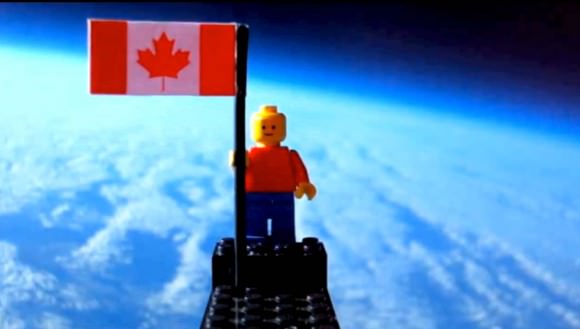
This 2012 project was called “Lego Man In Space” (although of course, balloons fly high in the atmosphere and well below the Karman Line at 62 miles or 100 kilometers above the surface.) Two teenagers from Toronto, Canada — Mathew Ho and Asad Muhammad — launched the weather balloon from a local field and captured some stunning video and pictures along the way.
“Upon launch we were very relieved. But we had a lot of anxiety on launch day because there were high winds when we were going up after all the hard work,” said Ho in a studio interview at the time on Canadian news channel CTV.
“We were also scared because now we would have to retrieve it back after it came down,” Asad said.
“We had no idea it would capture photos like that and would be so good,” said Ho. “We were blown away when we saw them back home.”
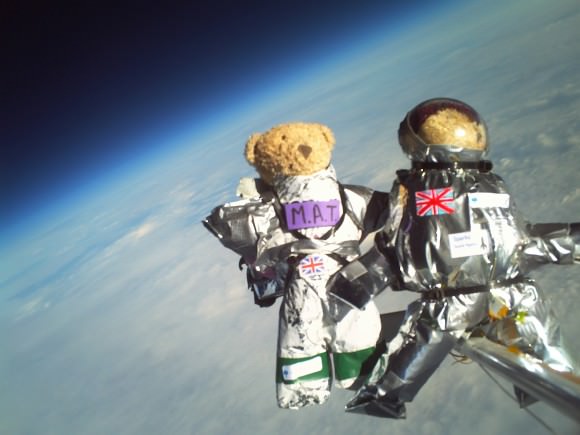
It’s a teddy bear party in the sky! A group of English 11-13-year-olds designed the spacesuits on these stuffed animals, which were sent aloft to 30,085 meters (101,066 feet) in 2008. While at first glance the purpose looks esoteric, the goal was to test which spacesuit materials best insulated against the -53 degrees Celsius (-63 Fahrenheit) temperatures the teddies endured.
Student-run Cambridge University Spaceflight helmed the project along with a science club and community college.
“We want to offer young people the opportunity to get involved in the space industry whilst still at school and show that real-life science is something that is open to everybody,” stated Iain Waugh, then chief aeronautical engineer of CU Spaceflight.
“High altitude balloon flights are a fantastic way of encouraging interest in science. They are easy to understand, and produce amazing results,” added Daniel Strange, treasurer of CU Spaceflight.
Sometimes the aim is more artistic, such as this German project that created a beautiful video showing the views from more than 100,000 feet (30,480 meters). You can see in the video above the careful preparations that go into launch, plus some of the side benefits — such as getting to make funny voices using helium! But it was the engineering challenges that attracted these students, they wrote Universe Today in 2011.
“Our challenge was to survive ambient air pressures as low as 1/100th of an atmosphere, temperatures as low as -60°C and finally to locate and recover the camera,” Tobias Lohf wrote . “We had a HD-Cam, GPS tracker and a heating pad on board, and all the construction had a total weight of about 1kg.”
The students emphasized that it doesn’t take a big budget or a lot of engineering to get that high. “All you need need is a camera, weather balloon and duct tape,” they said.
Brazilian Band Soars to New Heights with a NASA-Inspired Video
Popular Brazilian rock band Fresno recently released a new video for their new song, “Infinito”, and it really rises above the rest — literally!
It’s a story of four guys who take their childhood dream of launching a package up into space and, after years apart, come back together to make it a reality. Along the way we get to see some great views from a camera that the band members actually sent up to the edge of space via weather balloon — an accomplishment that came with its fair share of challenges.
Fresno lead member Lucas Silveira shared some behind-the-scenes info with Universe Today. “We wasted two cameras. One of them landed on a military base — exactly in the middle of a mine field — and the other simply disappeared… completely lost due to the lack of cellular signal on the landing spot.”
And even on a successful third try there were some technical difficulties.
“In our third attempt we used a different balloon, with more capacity, and it managed to fly for over 3.5 hours… but our camera only survived for around 2.5 hours. So we had to send a smaller balloon just to capture the ‘popping up’ moment, and added it to the ‘main balloon ride’ on post production.”
Still, the results — a dizzying view of Earth from 35 km up — are well worth it, and the story is an inspiring one… inspired, in fact, by NASA.
“I wrote this song after watching a video by NASA in which they zoom out from the Himalayas to the edge of the universe, showing the areas that still yet to be mapped. We are so infinitely small in the middle of all this greatness, and suddenly our problems get as tiny in our heads as our lucky existence here. It’s about searching for better days, creating a better future through proactivity and not letting others letting you down.”
When you soar that high it’s hard to feel let down.
Video courtesy of Fresno. Technical and launch assistance provided by ACRUX Aerospace Technologies. Band photo by Gustavo Vara.
Fly To Space For $320!
[/caption]
Ok, at 100,000 feet it’s not really “space” but for $320 USD JP Aerospace is offering a very affordable way to get your research experiment, brand statement, artwork or anything you can imagine (and that fits into a 50mm cube, weight limits apply) into the upper atmosphere. Pretty cool!
Touting its program as “stomping down the cost of space”, Rancho Cordova, California-based JP Aerospace (America’s OTHER Space Program) is offering its MiniCube platform to anyone who wants to get… well, something… carried up to 100,000 feet.
The plastic MiniCubes are each 1mm-thick, 48mm wide and 50mm high. Their bases have a standard tripod mount, and the MiniCubes can be cut, drilled, printed and/or modified within parameters before being mailed back to JPA for flight. Once the MiniCubes are flown, they are returned to their customers along with a data sheet and a CD of images from the mission. All for $320!
Again, it may not technically be “space”, but the view’s not bad.
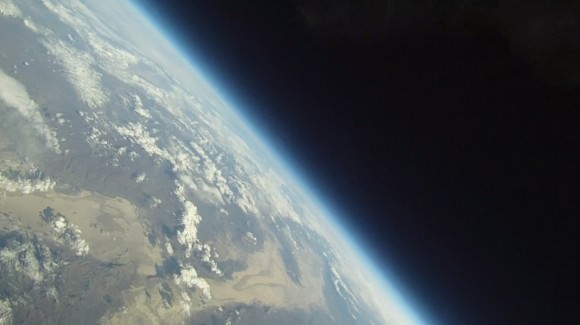
At the time of this writing there are 20 spaces available for the next JPA high-altitude balloon flight on September 22.
Find out more about JPA, MiniCubes, size specifications and how to purchase a space on the next flight here.
All images via JPAerospace.com



